第17章 3(1)
Now that we have established these distinctions, we must proceed to consider causes, their character and number. Knowledge is the object of our inquiry, and men do not think they know a thing till they have grasped the 'why' of (which is to grasp its primary cause). So clearly we too must do this as regards both coming to be and passing away and every kind of physical change, in order that, knowing their principles, we may try to refer to these principles each of our problems.
In one sense, then, (1) that out of which a thing comes to be and which persists, is called 'cause', e.g. the bronze of the statue, the silver of the bowl, and the genera of which the bronze and the silver are species.
In another sense (2) the form or the archetype, i.e. the statement of the essence, and its genera, are called 'causes' (e.g. of the octave the relation of 2:1, and generally number), and the parts in the definition.
Again (3) the primary source of the change or coming to rest; e.g. the man who gave advice is a cause, the father is cause of the child, and generally what makes of what is made and what causes change of what is changed.
Again (4) in the sense of end or 'that for the sake of which' a thing is done, e.g. health is the cause of walking about. ('Why is he walking about?' we say. 'To be healthy', and, having said that, we think we have assigned the cause.) The same is true also of all the intermediate steps which are brought about through the action of something else as means towards the end, e.g. reduction of flesh, purging, drugs, or surgical instruments are means towards health.
All these things are 'for the sake of' the end, though they differ from one another in that some are activities, others instruments.
This then perhaps exhausts the number of ways in which the term 'cause' is used.
As the word has several senses, it follows that there are several causes of the same thing not merely in virtue of a concomitant attribute), e.g. both the art of the sculptor and the bronze are causes of the statue. These are causes of the statue qua statue, not in virtue of anything else that it may be-only not in the same way, the one being the material cause, the other the cause whence the motion comes. Some things cause each other reciprocally, e.g. hard work causes fitness and vice versa, but again not in the same way, but the one as end, the other as the origin of change. Further the same thing is the cause of contrary results. For that which by its presence brings about one result is sometimes blamed for bringing about the contrary by its absence. Thus we ascribe the wreck of a ship to the absence of the pilot whose presence was the cause of its safety.
All the causes now mentioned fall into four familiar divisions.